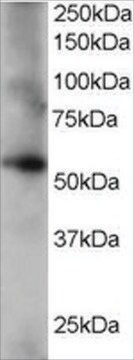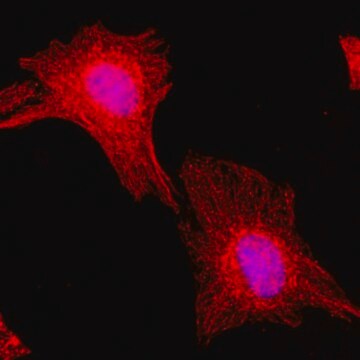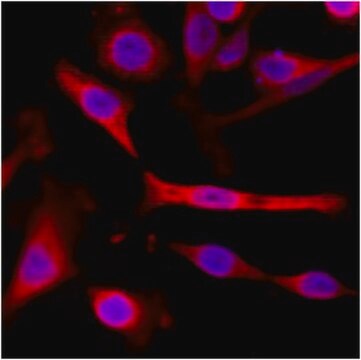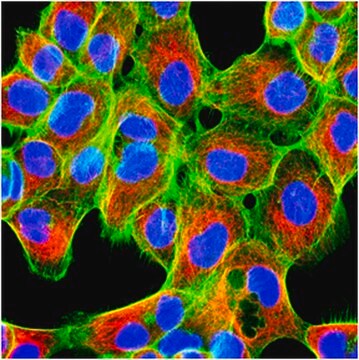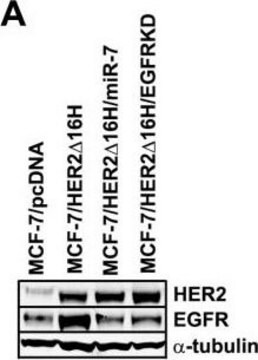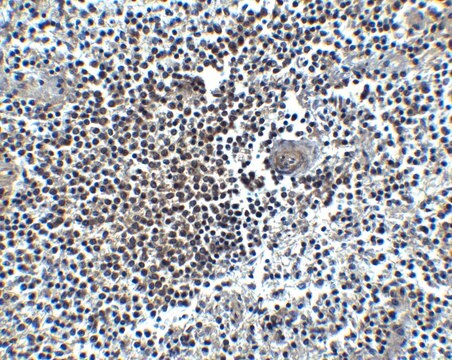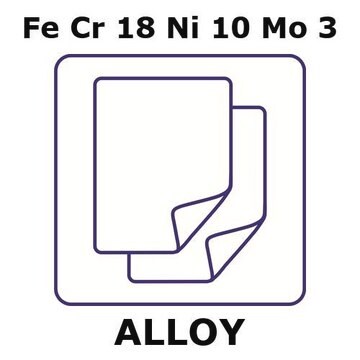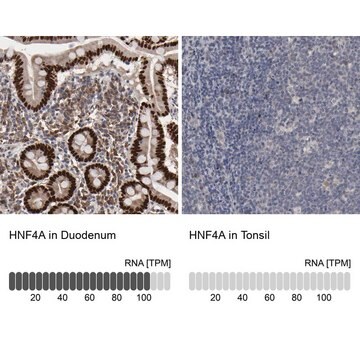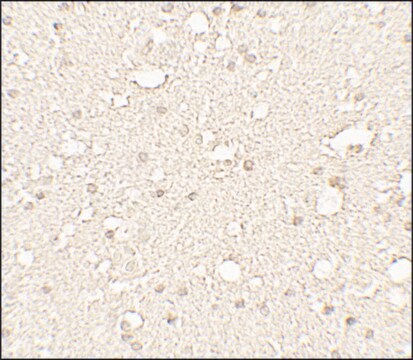Kluczowe dokumenty
SAB4200117
Anti-Coronin-1C (C-terminal) antibody produced in rabbit
~1.5 mg/mL, affinity isolated antibody
Synonim(y):
Anti-CORO1C, Anti-Coronin-1C (C-terminal region), Anti-Coronin-3 (mouse), Anti-HCRNN4
About This Item
Polecane produkty
pochodzenie biologiczne
rabbit
białko sprzężone
unconjugated
forma przeciwciała
affinity isolated antibody
rodzaj przeciwciała
primary antibodies
klon
polyclonal
Formularz
buffered aqueous solution
masa cząsteczkowa
antigen ~55 kDa
opakowanie
antibody small pack of 25 μL
stężenie
~1.5 mg/mL
metody
indirect immunofluorescence: 5-10 μg/mL using NIH3T3 cells
western blot: 1.5-3.0 μg/mL using A431 cell extract
Warunki transportu
dry ice
temp. przechowywania
−20°C
docelowa modyfikacja potranslacyjna
unmodified
informacje o genach
human ... CORO1C(23603)
mouse ... Coro1c(23790)
rat ... Coro1c(501841)
Opis ogólny
Zastosowanie
Działania biochem./fizjol.
Postać fizyczna
Oświadczenie o zrzeczeniu się odpowiedzialności
Nie możesz znaleźć właściwego produktu?
Wypróbuj nasz Narzędzie selektora produktów.
Kod klasy składowania
10 - Combustible liquids
Temperatura zapłonu (°F)
Not applicable
Temperatura zapłonu (°C)
Not applicable
Wybierz jedną z najnowszych wersji:
Certyfikaty analizy (CoA)
Nie widzisz odpowiedniej wersji?
Jeśli potrzebujesz konkretnej wersji, możesz wyszukać konkretny certyfikat według numeru partii lub serii.
Masz już ten produkt?
Dokumenty związane z niedawno zakupionymi produktami zostały zamieszczone w Bibliotece dokumentów.
Global Trade Item Number
| SKU | GTIN |
|---|---|
| SAB4200117-25UL | 4061837724978 |
| SAB4200117-200UL | 4061837724961 |
Nasz zespół naukowców ma doświadczenie we wszystkich obszarach badań, w tym w naukach przyrodniczych, materiałoznawstwie, syntezie chemicznej, chromatografii, analityce i wielu innych dziedzinach.
Skontaktuj się z zespołem ds. pomocy technicznej